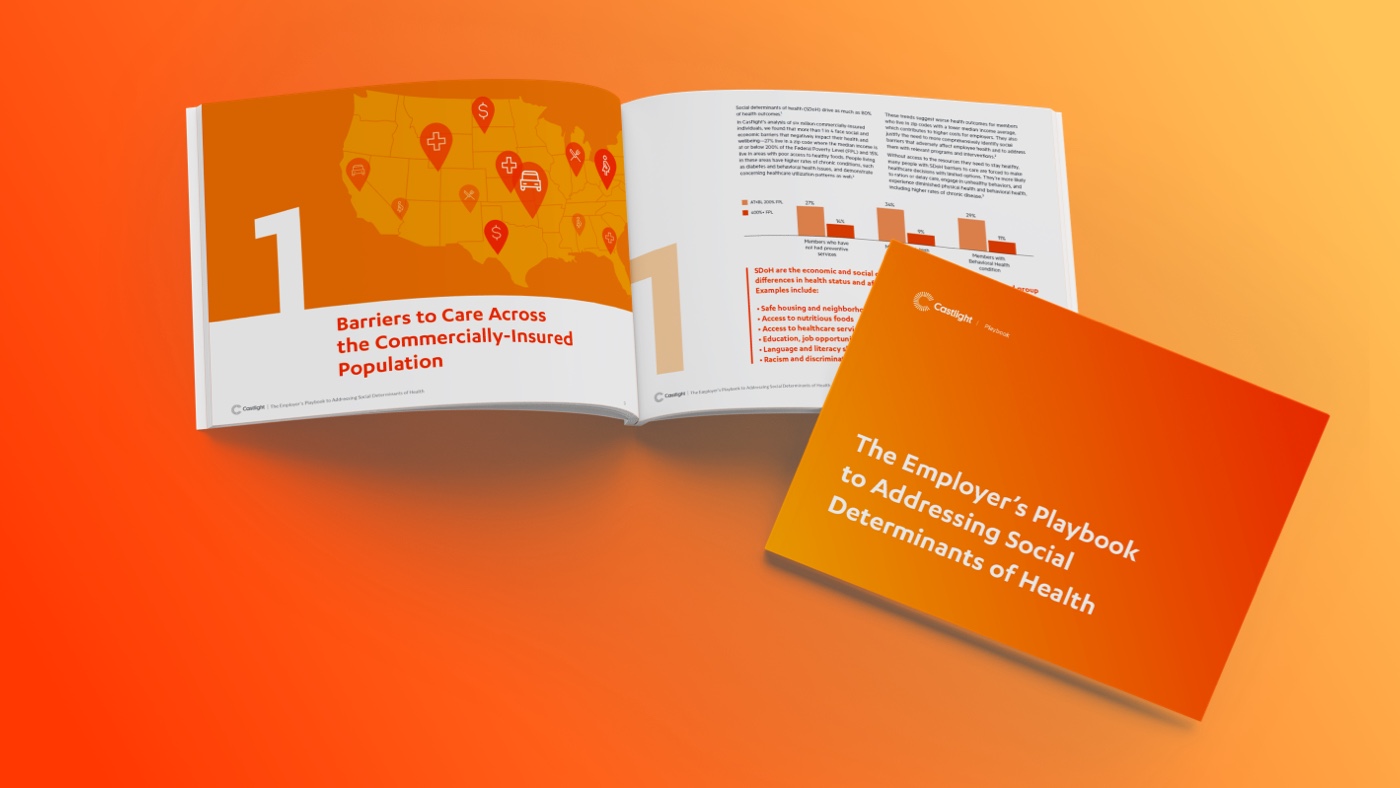Each year, nearly 30% of U.S. adults struggle with a moderate to severe mental health issue. And in Castlight’s recent Workforce Health Index, we found that almost one in four commercially-insured individuals reported feeling down, depressed, or hopeless several days over a two-week period in 2021. Unfortunately, Mental Health America reports more than half of those who experience mental illness don’t receive treatment for it.
While mental health issues are widespread across the U.S., they disproportionately affect vulnerable communities, which are “those populations that have [care] access barriers, whether it’s cost, proximity to available services, time, technology, skills, resources to access services, or language or cultural considerations,” explains Dr. Bruce Sherman, medical advisor for the National Alliance of Healthcare Purchaser Coalitions. These barriers often prevent people from getting the help they need at the right time, or at all.
In a recent Castlight webinar, Dr. Sherman, Sean Grady, director of Employee Benefits at Healthfirst, DeDe Alexander, mental health clinician and director of clinical partnerships at Spring Health, and Lindsay Leeder, director and clinical consultant at Vera Whole Health, discussed the critical link between mental health and diversity, equity, and inclusion (DEI).
Here are five tips on how to ensure all your people—including those who are most vulnerable—get the behavioral health care they need.
1. Provide Access to a Diverse Population of Providers
It’s important for providers (e.g., psychiatrists, therapists, and licensed clinical social workers) to take an empathetic approach in order to develop a strong relationship with their patients that’s built on trust and maximizes care. Patients may feel more understood and comfortable if their provider has the same (or a similar) gender, race, ethnicity, and/or sexuality.
When vetting behavioral health solutions and vendors, make sure to include diversity in your criteria. It’s also important to ensure all available diversity-related details are easy for employees to see as they are searching for a provider.
2. Talk (and Listen) to Your Employees to Better Understand Exactly What They Need
It’s key to create spaces—like employee resource groups for LGBTQIA+, employees of color, and so on—where all your people feel safe having an open dialogue about sensitive topics. This will help you gather more details about what they need when it comes to mental health care and any barriers they may be facing.
When talking to employees, reframe the conversation—instead of asking what’s the matter with them, ask what matters to them. Reframing the question is “a way of eliciting from individuals what’s working in the available benefit design but also what’s not working,” Dr. Sherman says. Maybe, for example, “someone’s worried about making ends meet so they’re working two jobs. [Therefore], they don’t have time to address some issues that may be surfacing for them. Those are the kinds of things that can be identified through conversation.”
And when you combine this qualitative data with the quantitative—sorting through claims data by race, ethnicity, income, and so forth—you can identify gaps in service delivery and better understand how to build a truly equitable benefits design, which would more meaningfully support employees and their families.
3. Leverage Workplace Mental Health Champions to Reduce the Stigma
When employees see their colleagues—especially executives and others in leadership positions—being vulnerable about their mental health struggles, they may feel more comfortable talking about it and seeking support in response. And, ultimately, this will build a stronger working environment and improve the company culture.
“If one of your employees says, ‘I can’t come in because I have a therapy appointment’ or ‘I need to take off for a therapy appointment,’ [just like they would if they had a doctor appointment], you have reached the point in which mental health is appropriately integrated into your culture, ” says Alexander.
In general, all team members should feel comfortable using their paid time off and sick days, and mental health champions can assist with this by modeling certain behaviors, like taking time off.
4. Partner with a Connected Navigation Platform
HR and benefits leaders already have enough on their plates—trying to identify the specific care every single employee (and their families) may need, plus the barriers they may face, would be an immense undertaking. That’s where a connected navigation system, like Castlight, comes in.
A data-rich platform—equipped with intricate personalization capabilities and human support when needed—can determine which members need behavioral health support and surface any barriers, such as the cost of care or lack of transportation. Beyond that, a sophisticated navigation solution can engage employees by pushing tailored content to them that makes them aware of the benefits available and teaches them how to best access and utilize them.
Human support, such as Castlight Care Guides, can help members figure out how to navigate any barriers they may face, as well. For example, if the member has concerns about the cost of mental health care, the Care Guide could show them how to leverage their HSA (if applicable), connect them to low or no-cost resources and counseling services provided by their employer (like Spring Health), or search for free support groups that operate virtually or in the member’s area.
Plus, a navigation platform can leverage claims, wellbeing, and other data to help surface vulnerable populations and barriers to HR leaders, which would better empower those leaders to figure out what programs their workforce really needs and how to help their people overcome care barriers.
5. Educate Employees on the Benefits Available to Them
Beyond open enrollment, many employees forget the benefits available to them. HR leaders should make every effort to avoid this “set-it-and-forget-it” mindset.
They can do this by increasing the frequency of messaging on how to access available benefits. This is also where a connected navigation platform can be really helpful, as it can identify which employees need to receive which messages and deliver those messages to the intended audience. This decreases the administrative burden for benefits leaders but also ensures all employees aren’t inundated with communications about every single offering, which would be incredibly overwhelming and make it hard for employees to understand which programs they should engage in. In addition, mental health champions can help increase awareness of programs.
Awareness, access, and affordability issues present significant barriers to behavioral health care—especially for those living in low-income, minority, or rural communities—but employers can help all their people get the care they need.
To learn more about how to integrate DEI efforts into your behavioral health strategy, watch the webinar. To view all of our past webinars and upcoming webinars, click here.




